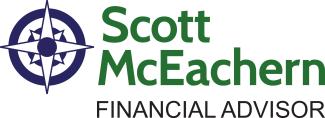The One Thing To Learn During Financial Literacy Month
You may or may not know that November is Financial Literacy Month. A whole month dedicating to learning about budgeting, investing, insurance, estate planning, taxation – woah! That’s a lot of information to take in. So here’s the deal…
If you are only going to take away one thing from Financial Literacy Month, it’s this:
Learn How to Calculate Your Net Worth
What’s My Net Worth??
The Net Worth Statement is a financial tool that takes a snapshot of where you are financially today, so that you can compare at a point in the future and ensure you are heading in the right financial direction.
Let’s break it down so you can create your own (it’ll only take 15 minutes).
Assets
We all work hard to earn an income and with that money we can purchase assets. Below is a list of common assets to include on your net worth statement:
- House Value
- RRSP Investments
- TFSA Investments
- Bank Account Balance
- Other Investments
- Vehicles
- Collectibles
For the purpose of this exercise, we like to leave out things like your vehicle and collectibles because generally these are things you use on a daily basis or don’t plan on getting rid of. To calculate your total assets, list them all out and add them up. It’s that easy. You are now halfway done calculating your net worth.
Liabilities
Liabilities are best defined as things we owe, commonly referred to as debts. To complete the second half of the equation, you need to add up all of your debts. In addition to this, we like to list the interest rate of these debts next to the balance. This really helps when prioritizing debt repayment. Once again, we’ve created a list below to help you out with what to include:
- Mortgage Balance
- Credit card debts
- Car Loans
- Student Loans
- Line of Credit
- Family Loan
Once listed, add them all up and you’ve got your total liabilities.
Net Worth
To calculate your Net Worth, all you have to do is subtract your liabilities from your assets. Looks like this:
Assets – Liabilities = Net Worth
If you have a positive number, congratulations! You own more than owe and are likely already heading in the right direction of accumulating more assets for your future. If you have a negative net worth, don’t fret. It’s common for students to have large student loans or lines of credit and new graduates to have car loans. The idea here is that you want to be increasing your Net Worth by paying off those debts. If there’s one good thing about debt it’s this: paying it off increases your Net Worth automatically. If you have a negative net worth and it keeps getting worse, you’re going to have to make some behavioural changes in how you spend your money.
Tracking your net worth on an annual basis just makes financial sense. If you’d like a sample template to print and complete, send me an email to request one: scottmce@csolve.net.

